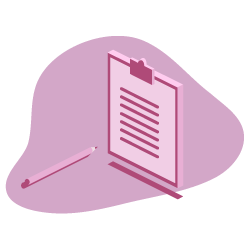There are a few rules to respect if you want to maximize your ranking in search engines. Your article needs to be thought in terms of SEO if you wish people to find it in their search engine results. But on the other hand, it shouldn’t look like as if you have written your article for the crawlers.
Search engines reward useful content and not over-optimized content.
This article is a step by step guide to optimize your content for Google and be sure your informations will be found by your targets.
1# Keywords
Keywords are the fondation of your website ranking so you must have already chosen them for your global content strategy. Following that logic, you have to use the same keywords or similar ones in your article to drive traffic to your website.
Through the read of your article you should see some of them occurring naturally in the text. Are they the most relevant ones? To check their efficiency, use Google Trends. It will show you which topic or keyword people are more likely to search.
Then, choose your best keyword and place it in the title. Do the same for your body content and add the alternatives keywords. However, don’t overdo it, Google will penalized stuffing behaviors!
To sum up, what matters is really to allow a topic per page and, so on, a field of keyword per page. It avoids duplicate content and feeds your SEO.
[Case Study] Increase visibility by improving website crawlability for Googlebot
2# Title
The title of your article is the first thing Google and your readers will see. It must speak to your visitors and be optimized to rank in the best way. If you have not already, you can check out our last article about how to write a compelling headline.
In fact, it has to be appealing to increase the click rate. As we said in the previous point, it has to contain at least one primary keyword placed at the beginning and if possible, two or three.
Furthermore, pick the right keyword related to the subject of your article. If there is no clear relation, Google will penalized your ranking and people will just go away.
Be sure to write a 69 signs title, that is the right visualization size for the search engines. Then, be careful of using a unique title tag for each page to avoid duplicate content.
3# Meta description tag
Meta description is the small text you can see below your title in the search engine results. As a matter of fact, it also impacts your ranking.
Meta description has the advantage to sum up your article in 160 characters and should contain a call to action.
It strengthens your title tag so be sure to write a description which has a clear relevance. Like the title, place your keywords at the beginning and favour two or three, not more. Finally, you can mention your brand to increase your brand awareness
4# URL
The URL of your webpage should be optimized for providing search engines the best description of your page content. It should contain the appropriate keywords in order to help your users find your content more easily. So for example if your article deals with mobile-friendly updates, your article URL should look like this : htpps://mywebsite.com/mobile-friendly-updates/
#5 Header tags: H1, H2, H3
The tag <h1> highlights your title, so you have to concentrate your effort on this one. The tags h2, h3, h4.. class your subtitle by order of importance. They are useful to rank your article but this is not the most significant point on your SEO. By placing your keywords on these tags, you also facilitate your visitors reading.
#6 Image file names and alt tags
Images are also affected by SEO rules. Google needs to rank them as well to feature them in the Google Image results. An image named “picture4595.jpeg” will have no chance to be ranked! So use a proper title that describe your pictures. To be clear, the more information Google will get about your site, better it will be. So the alt attributes must be filled with proper keywords.
#7 Outbound links
Outbound links toward authority websites can boost your pagerank. It has a double advantage; first it provides search engine a better understanding of your niche and it increases your website quality and community. Furthermore, it brings a targeted audience to your article and helps you to get closer with influential bloggers. Finally it feeds your SEO with relevant links.
But be careful of your outbound link strategy: avoid linking toward too many blogs or with ones without clear relevance and prefer qualitative ones.
#8 Inbound links
Using inbound links draw a path into your content and link articles within your website. By adding internal links, you will avoid duplicate content and create value by sharing additional informations. It has the double advantage to lower your bounce rate: people are less likely to click away from your website if they can have all the information on a unique page.
#9 Sharing buttons
Your social signal is gaining an important place for search engine algorithms. Inserting sharing buttons on your article can considerably increase your social sharing and so your presence on social medias.


A good article about SEO. I recommend reading it.